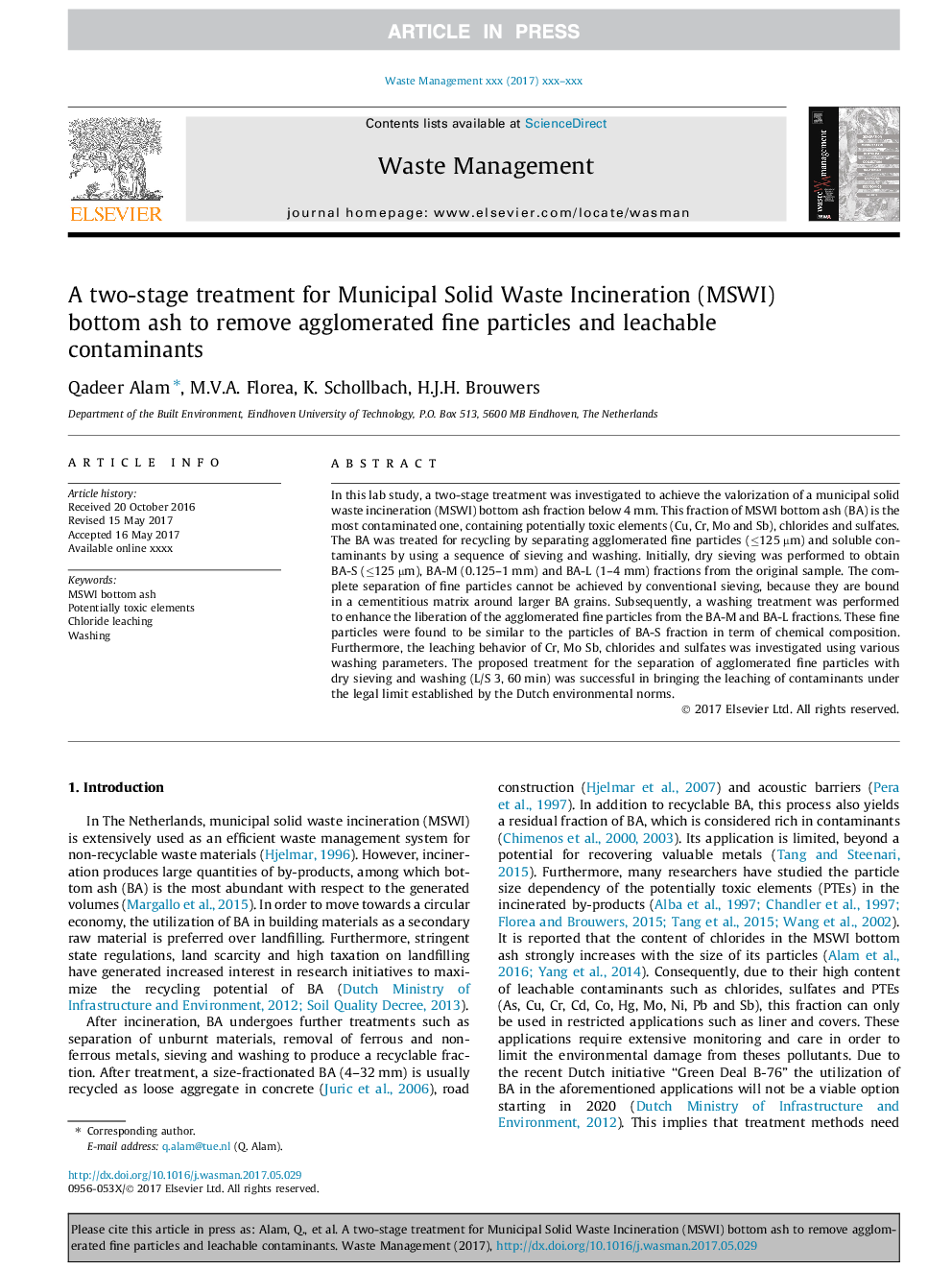| Article ID | Journal | Published Year | Pages | File Type |
|---|---|---|---|---|
| 5756653 | Waste Management | 2017 | 12 Pages |
Abstract
In this lab study, a two-stage treatment was investigated to achieve the valorization of a municipal solid waste incineration (MSWI) bottom ash fraction below 4 mm. This fraction of MSWI bottom ash (BA) is the most contaminated one, containing potentially toxic elements (Cu, Cr, Mo and Sb), chlorides and sulfates. The BA was treated for recycling by separating agglomerated fine particles (â¤125 µm) and soluble contaminants by using a sequence of sieving and washing. Initially, dry sieving was performed to obtain BA-S (â¤125 µm), BA-M (0.125-1 mm) and BA-L (1-4 mm) fractions from the original sample. The complete separation of fine particles cannot be achieved by conventional sieving, because they are bound in a cementitious matrix around larger BA grains. Subsequently, a washing treatment was performed to enhance the liberation of the agglomerated fine particles from the BA-M and BA-L fractions. These fine particles were found to be similar to the particles of BA-S fraction in term of chemical composition. Furthermore, the leaching behavior of Cr, Mo Sb, chlorides and sulfates was investigated using various washing parameters. The proposed treatment for the separation of agglomerated fine particles with dry sieving and washing (L/S 3, 60 min) was successful in bringing the leaching of contaminants under the legal limit established by the Dutch environmental norms.
Related Topics
Physical Sciences and Engineering
Earth and Planetary Sciences
Geotechnical Engineering and Engineering Geology
Authors
Qadeer Alam, M.V.A. Florea, K. Schollbach, H.J.H. Brouwers,
